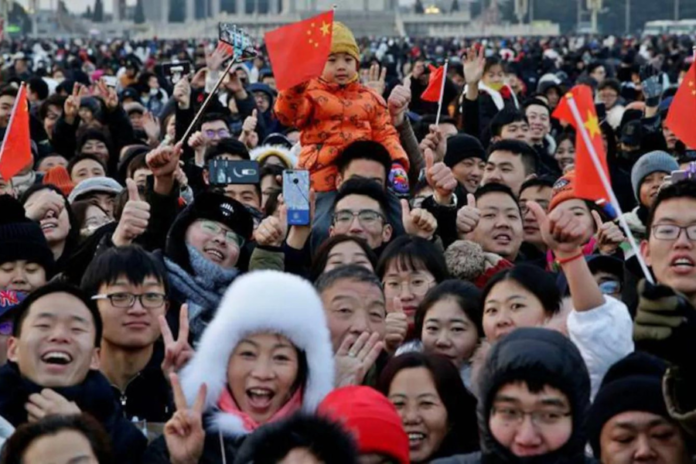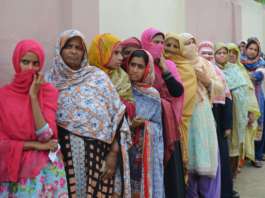
Party leaders decided to raise the national retirement age progressively over the next five years during the most recent Third Plenum meeting in China. With retirement ages of 50 for women in blue-collar jobs, 55 for white-collar workers, and 60 for men, China now has one of the lowest retirement ages in the world.
The decision to raise the retirement age has not been made public, but it comes at a time when the nation is facing several financial difficulties, such as a weak economy, rising youth unemployment, and skyrocketing housing costs.
However, China’s demographic problems are not recent; rather, they are the result of decades of family planning laws, especially the “one-child” rule. China’s current economic crisis has been greatly exacerbated by this demographic change, which is predicted to continue in the years to come.
Beijing’s current demographic problems have their roots in the 1980 implementation of the “one-child” policy. The National Health and Planning Commission required couples to limit their family size to one child as part of its family planning initiatives in an effort to promote economic growth.
The policy was implemented with a combination of rewards and sanctions to ensure adherence. The penalties meted out to “violators” ranged from fines and termination from official positions to grave breaches of women’s reproductive rights, such as sterilizations and forced abortions.
In the years that followed, the policy’s cultural effects—such as a rise in female infanticide—further distorted the gender ratio in the nation. Many Chinese citizens kept the birth of their second child a secret in order to avoid consequences.
The ability to register their second-born children in the national household system was taken away from those who could not afford the fines, especially the working-class population, which Communist China claims to prioritize in its development goals. This effectively deprived them of their legal access to healthcare and education.
The strategy resulted in almost 336 million abortions, 196 million sterilisations, and 403 million intrauterine device insertions—many of which were forced—according to official figures from China’s Ministry of Health. Beijing participated in serious violations of human rights and benefited greatly from them.
China has a gender gap of around fifty percent as a result of the “one-child” policy, which has been strictly enforced for thirty years, and the country’s cultural preference for male offspring. In 2008, the Chinese government was motivated by this to reevaluate the “one-child” policy.
The policy was changed a few times after that before being officially abolished in 2016. Nonetheless, the ‘one-child’ policy’s effects endure as China grapples with an imbalanced gender ratio from birth.
From 118 males for every 100 females in the 2010 census to 111.3 for every 100 in the 2020 census, there has been very little improvement in the ratio. The state’s implementation of the “one-child” policy has had a long-lasting effect on society and psychology, which has also affected the overall female fertility rate.
China’s fertility rate fell dramatically in less than 20 years, from three births per woman in the 1980s to a historic low of 1.09 in 2022—much below the 2.1 threshold required to maintain a stable population. China used to be the most populous nation on earth, but in April 2023, India overtook it in terms of total population.
For the second period in a row, China’s population is growing at the slowest rate. By the end of 2023, there will be about 1.409 billion people living there—the lowest number in sixty years.
China’s inverted age structure is especially concerning because of the country’s rapidly aging population (those over 65), which made up 8.87 percent of the population in the 2010 census but is currently making up roughly 13.5 percent.
On the other hand, according to the most recent census data, the working-age population (aged 16–59), which makes up 62.3 percent of the entire population, has shrunk by 40 million in just ten years.
It is expected that this tendency would continue in the upcoming years. The nation’s pension budget is under pressure due to the country’s persistent older population growth; this problem has gotten worse since the epidemic.
As of 2023, 296.97 million people in China were retired, or 60 years of age or older. This represents 21% of the country’s entire population, while the country’s life expectancy has increased to 78 years.
An assessment from 2019 predicted that the state pension fund might run out of money by 2035. The economic effects of the pandemic are anticipated to worsen the burden on the pension fund, especially since 300 million individuals are anticipated to retire over the next ten years, according to the pre-pandemic prediction.
China is starting to feel the economic effects of its demographic issues, as evidenced by the “grey hair” protests last year and the cut in medical benefits for seniors.
The strict “zero-COVID” policy implemented by the nation has resulted in a considerable slowdown in GDP growth year over year. In 2022, the growth rate was the lowest, at barely 3%. Even though the GDP has slightly increased since then, hitting the 5% growth target is still quite difficult.
June 2023 saw a new high of over 21.3% for youth unemployment (ages 16 to 24), following a rising trend that started in 2022. Beijing responded by deciding to cease releasing public statistics on youth unemployment.
It has just started publishing data again with a new methodology, which is thought to display a lower number, indicating a considerable improvement to 14.9% since December of last year.
Given that China is the second-largest economy in the world, the country’s population loss combined with rising youth unemployment is expected to have a major impact on the global economy.
Also Read: How India can counter J-20 fighters of China in Xinjiang, Tibet
This is anticipated to have an impact on China’s industrial output, import-export requirements, and, ultimately, global supply chains, especially for those nations that largely rely on Beijing.
It is consequently expected that China’s economic slowdown, which is a result of its demographic issues, will have repercussions for the world economy. China has not yet achieved the intended outcomes from its measures to solve its demographic concerns, such as the implementation of the three-child policy in 2021.
Economic policies that are perceived as being anti-working class include raising the retirement age and cutting pension payouts. This view is reflected in the recent retirement age reforms that have caused a popular uproar.
These actions are perceived as government attempts to restrict young people’s employment opportunities, postpone pension access, and maintain the disparity in pension benefits between white-collar and blue-collar workers.
Therefore, despite their seeming simplicity, China’s demographic difficulties are significantly more serious and complex than they seem, and their unavoidable effects on the dynamics of the global economy are still very much in play.



